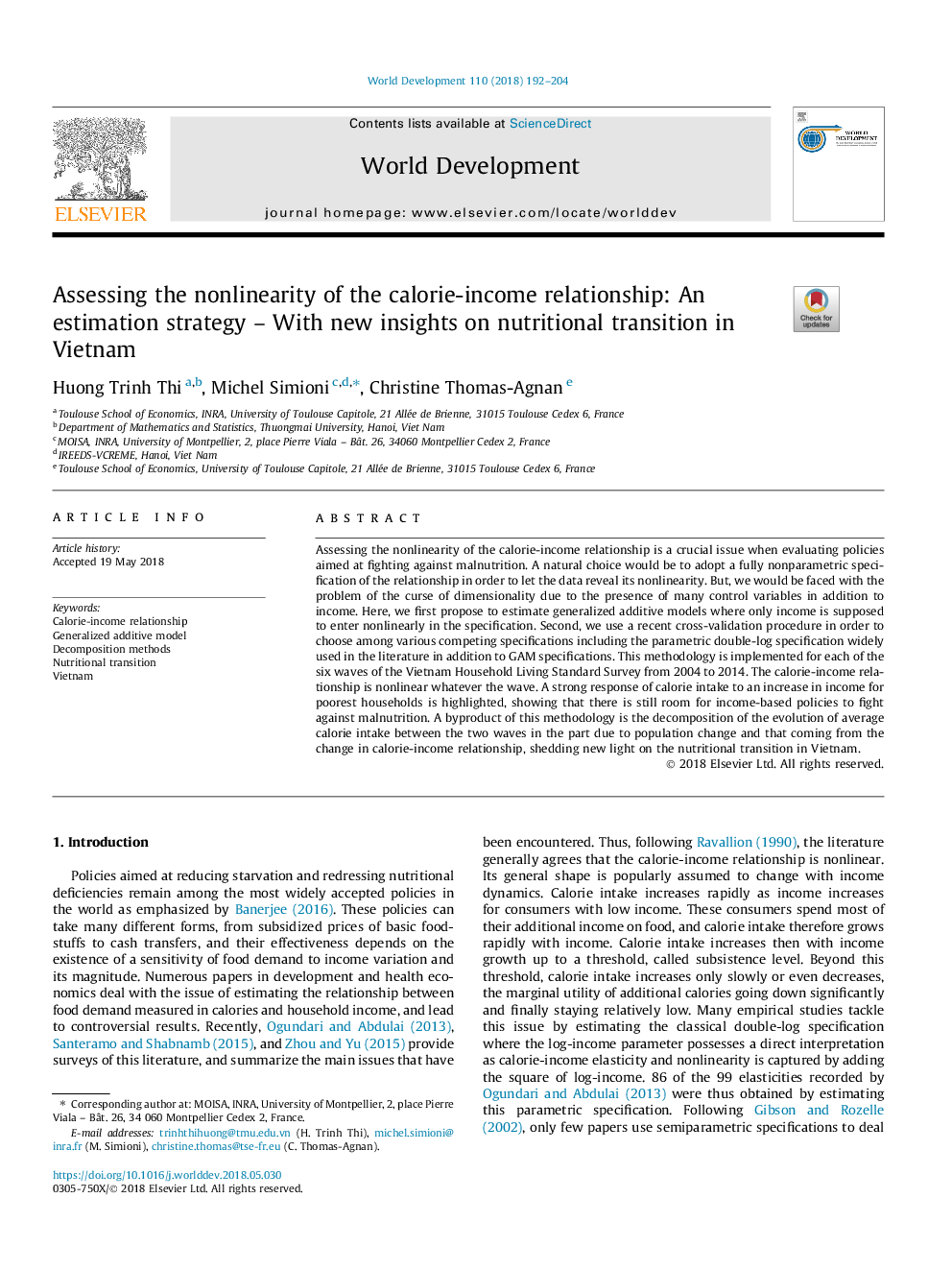| Article ID | Journal | Published Year | Pages | File Type |
|---|---|---|---|---|
| 7391355 | World Development | 2018 | 13 Pages |
Abstract
Assessing the nonlinearity of the calorie-income relationship is a crucial issue when evaluating policies aimed at fighting against malnutrition. A natural choice would be to adopt a fully nonparametric specification of the relationship in order to let the data reveal its nonlinearity. But, we would be faced with the problem of the curse of dimensionality due to the presence of many control variables in addition to income. Here, we first propose to estimate generalized additive models where only income is supposed to enter nonlinearly in the specification. Second, we use a recent cross-validation procedure in order to choose among various competing specifications including the parametric double-log specification widely used in the literature in addition to GAM specifications. This methodology is implemented for each of the six waves of the Vietnam Household Living Standard Survey from 2004 to 2014. The calorie-income relationship is nonlinear whatever the wave. A strong response of calorie intake to an increase in income for poorest households is highlighted, showing that there is still room for income-based policies to fight against malnutrition. A byproduct of this methodology is the decomposition of the evolution of average calorie intake between the two waves in the part due to population change and that coming from the change in calorie-income relationship, shedding new light on the nutritional transition in Vietnam.
Related Topics
Social Sciences and Humanities
Economics, Econometrics and Finance
Economics and Econometrics
Authors
Huong Trinh Thi, Michel Simioni, Christine Thomas-Agnan,
